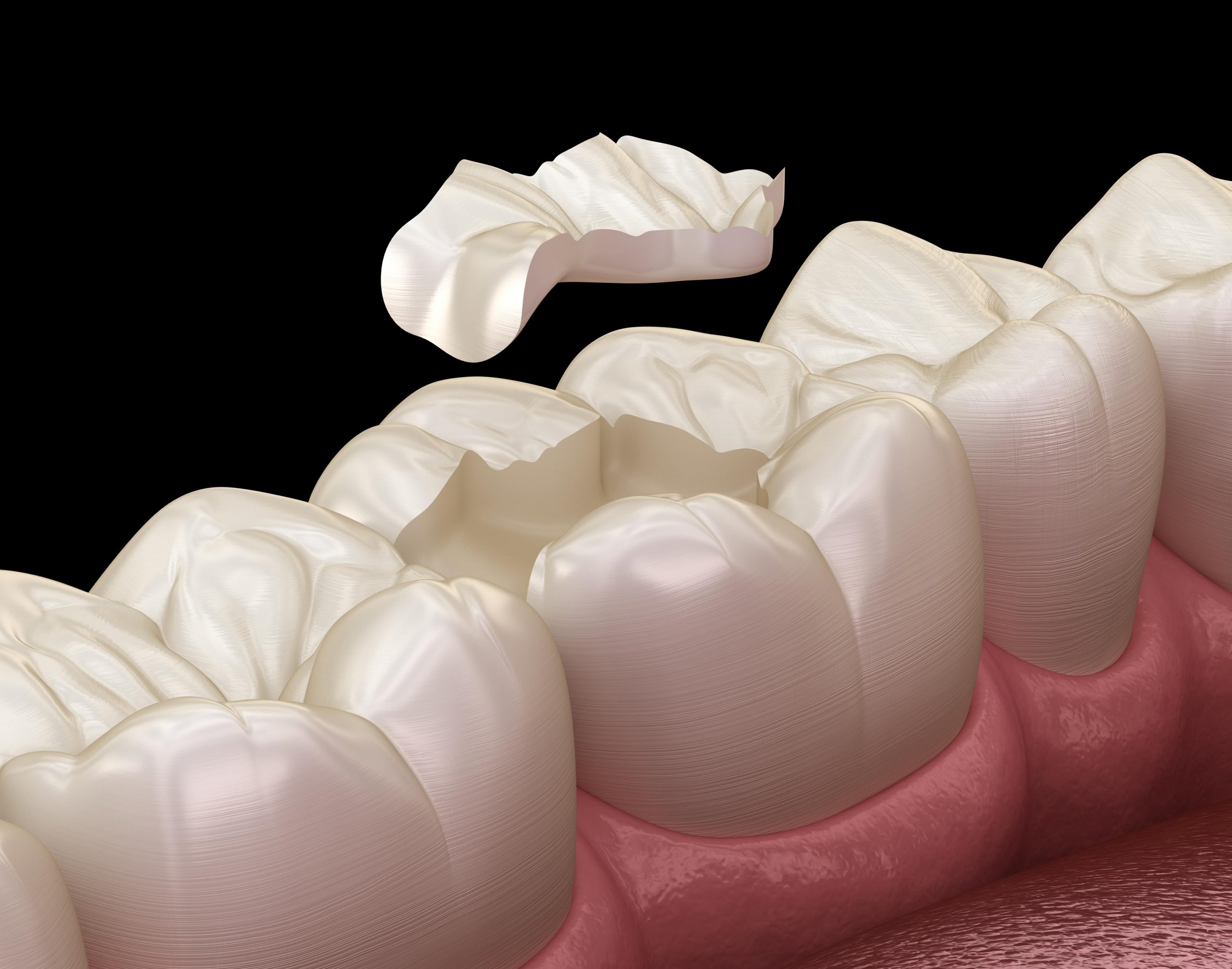Inlays and onlays are indirect dental restorations made in a laboratory and used to correct cavities that are much too large to be corrected with a simple filling.
A dental inlay is a restoration built in a laboratory from solid, custom-formed material. Your inlay can be carved into a bespoke shape with gold or milled into shape with porcelain, depending on the size of your cavity and how deep the cavity lies within the tooth.
Inlays are custom made to fit your tooth’s shape and size and are moulded to fit into the grooves of the tooth. Inlays do not extend beyond the cusps of the tooth.

Onlays, like inlays, also are made of solid, custom-made material. Being much larger than inlays, they are used to fill larger cavities that extend beyond the cusps of the damaged tooth.
Primary materials for making inlays and onlays include gold, composite or ceramic materials.
Gold has long been the primary material of choice in the past because of its durability and strength. Gold offers strong protection to teeth cusps weakened severely by cavities and trauma. With the introduction of alternatives like tooth-coloured restorations, gold has become less common as an inlay and overlay material, as they don’t blend in with your natural tooth colour. They are also more expensive than other restorations.
Gold inlays will usually be recommended by your dentist if a cavity filling fractures repeatedly. For aesthetic reasons, composite or ceramic inlays might be more attractive options, but they don’t have the strength or durability of a gold inlay and are more susceptible to damage.
Ceramic inlays and onlays are made of porcelain – porcelain mimics a tooth’s natural appearance in colour, shape, and function. It is stain-resistant, strong and durable, and among the most popular material for making tooth-coloured restorations.
Composite inlays and onlays are a modern alternative to gold or ceramic restorations and are used in filling cavities that are too large for traditional fillings. Composite inlays and onlays blend easily with your natural teeth and are stronger than traditional fillings but more fragile than gold and porcelain restorations.
Step 1: Fractured or damaged cavity fillings are removed, including any cavitated tooth tissue, leaving a “hollowed out” cavity.
Step 2: On your first visit, a mould will be taken of the damaged tooth to help your dentist decide on a suitable material to use for the inlay or onlay.
Step 3: To prevent further damage to your teeth, a temporary filling will be used to seal the cavity while your inlay or onlay is still being prepared.
Step 4: Once the restoration is complete, an appointment will be scheduled with your dentist to fit your inlay or onlay. Your dentist will administer a local anesthetic during this appointment to help ease the pain. The temporary filling will be taken off, and the inlay or onlay will be cemented into your teeth.
Most patients recover from an inlay or onlay procedure in just a few days. However, plaque and oral bacteria buildup are still a significant risk, so you must cultivate good oral hygiene to ensure your teeth stay healthy and strong. Dentists recommend the following tips to reduce the possibility of oral disease:
To find out more about inlays and onlays and discover if they’re the best option for you, get in touch with us at Smile Clinic London, and our friendly staff will be happy to advise you and answer all of your questions.